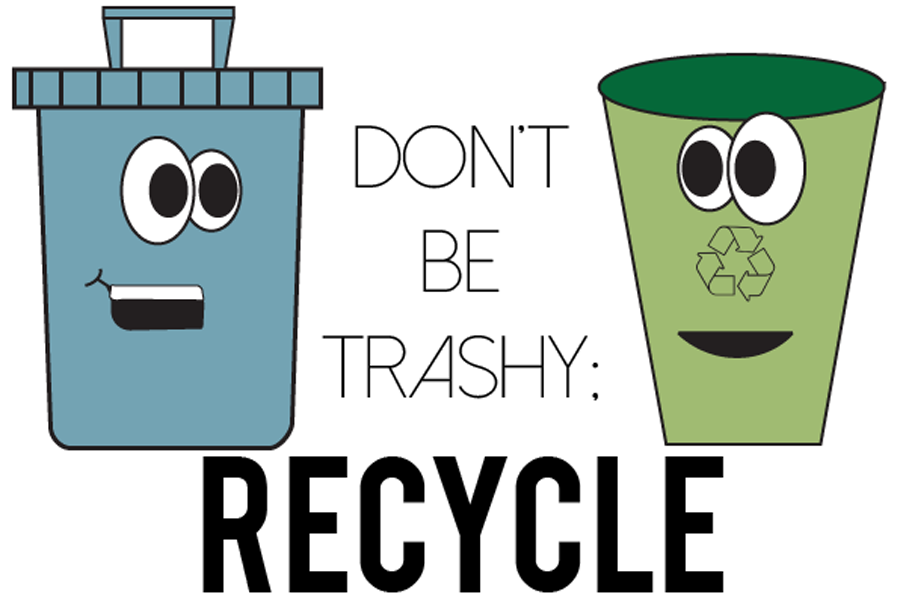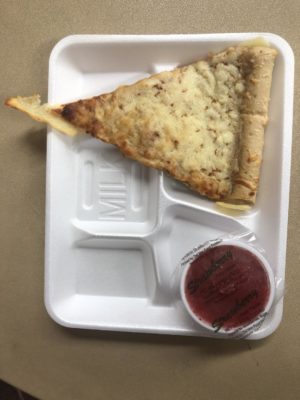Breaking it down: Simple ways to reduce, reuse, and recycle
November 6, 2016
This year in Global Issues with Mrs. McVey, we went over things such as terrorism and american values and moved onto issues facing the environment.
That’s when my interest in the class flourished.
We discussed topics such as pollution, carbon footprints, climate change, recycling, pesticides and GMO’s, as well as composting.
Now, before you quit reading because this could be a rerun of a ‘Go Green’ commercial, hear me out.
The short amount of time we spent on this subject was the most influential and educational part of my personal understanding of our environment and what we can do.
Which is why I wanted to talk about this.
There’s something most people don’t know: Recycling isn’t the only way to help the environment.
I understand it’s an outlandish idea, and I’ve probably lost half my readers after that sentence, but it couldn’t be any more brutally honest.
Remember the phrase “Reduce, Reuse, and Recycle”?
There’s more to it than just that and that’s why going green was shoved down our throats so much when we were children.
There’s simple things you can change in your lifestyle to fit each of these categories.
Let’s start with Reduce.
The best possible thing you can do is using plastic as little as possible. Yes, I know it’s more efficient for your day to day life, but it isn’t for the environment.
There is an island, an island, filled with plastic and garbage.
Imagine how much smaller that pile could be if we weren’t as wasteful?
The amount of plastic that is killing animals is ridiculously high, and to be frank with you, it isn’t getting any smaller.
Another way for everyone to reduce, especially in first world countries, is the amount of food they waste per meal.
“American food production has a tremendous resource cost–10% of the nation’s total energy budget, 50% of its land, and 80% of all U.S. freshwater consumption is dedicated to the production and distribution of food. An unconscionable amount of those resources are wasted completely, as up to 40% of all food ends up in landfills,” according to Food Rescue’s Website.
You can prevent this from happening in both your school and at home. It actually a one step process to help.
Curious what it is?
I’ll tell you: only take what you will eat.
Next we’ll talk about Reusing.
You can do simple things to help reuse such as composting.
“Composting is a simple way to add nutrient-rich humus which fuels plant growth and restores vitality to depleted soil. It’s also free, easy to make and good for the environment,” according to Earth Easy’s composting page.
You can do simple things such as putting your fruit/vegetable peels in your garden or under your soil.
Another great way to do this is by reusing plastic over, and over, and over again.
Lots of people do so by saving their plastic bags they get from grocery stores (try to use paper bags instead, though).
Plastic isn’t biodegradable so use it sparingly.
Last, but not least, we have recycling, but I would like to throw upcycling in here because a majority are trained to recycle at all possible times.
You already know the drill on recycling. Take your recyclables to a local recycling center, so let’s move on.
Upcycling is the easiest and most fun option out of all three because there are so many things you can do.
Don’t be afraid to keep those old clothes, towels and broken chairs (wooden products) because you can always transform those things into something new and fabulous.
I’ve created shelves for my room out of popsicle sticks and they’re the best for holding my succulents.
If that intrigues you, you can check out tons of ideas on Pop Sugar’s website for tons of ideas.
There are so many little things in each of these categories you can do everyday to step towards a healthier earth; and anymore the responsibility to do so is in our hands.






